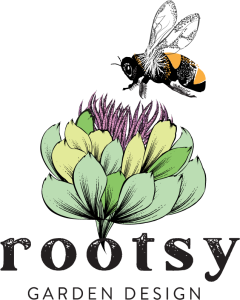DESIGN PROCESS
Good things take time
We work best with clients who don’t have a tight timeline. Successful landscape design requires getting to know the client, understanding their goals & stylistic preferences, educating them about their environment, and thoughtfully planning how they will most successfully engage with a transformed outdoor space. Every garden space is unique so it is imperative we analyze the existing site to inform design direction. We consider everything below and above us when walking a site, such as living soil, watershed elements, climate, sun/shade studies, native habitats, neighboring influences, existing focal points and views, potential challenges, etc. This is all before we even draft a concept! Thoughtful landscape design is a process worth dedicating time to because it results in a special outdoor living space that will enhance the life of the client for years to come.
If our design style sounds like a good fit for you, we look forward to learning more about your project before scheduling a consultation.
Our design process is customized to project-specific needs, but generally include the following:
1
Consultation
We will visit you at your home for a site walkthrough. This is a great opportunity for you to communicate your garden goals and ask questions. We will help you begin formulating ideas for your new landscape and can make suggestions. We use this time to get a sense of existing landscape features and garden potential. These on-site meetings often last 1-1.5 hours.
There is a fee of $200 for consultations, to be collected at time of service.
2
Paperwork & Homework
Following a successful consultation, we will email you a project-specific agreement outlining our fees, services, and deliverables. Once the agreement is signed, we begin working on your landscape design and provide a tentative schedule for completion. We will also send you some homework to complete before our next meeting.
3
Site Assessment & Planning
We spend a significant amount of time in the existing landscape to observe, measure, map, and assess current conditions of the soil, plants, existing structures, slope, etc. This is followed by site-specific research that will influence design decisions (e.g., municipal ordinances, rebate programs, climate and wind patterns, sun/shade paths, native species and local plant communities, etc.).
*Depending on the scope of the project, the client may be responsible for contracting licensed specialists, such as architects, land surveyors, civil or soil engineers, etc.
4
Conceptual Designs
We present 1-2 high level concepts, which are often a combination of computer-aided and hand-drawn 2D graphics. Clients typically respond well to comparing design options and it results in productive discussions about preferences which inform the final design phase.
5
Final Design & Planting Plan
Clients receive a hard copy and a digital copy of the final design, which includes the final concept drawn to scale using computer-aided design (CAD), proposed materials, plant palette with irrigation requirements, and ongoing maintenance tips.
6
Implementation
The client will hire a licensed contractor to build out the conceptual design. We provide a compiled work list to assist with getting bids in a timely manner. We will also recommend reliable contractors (a.k.a. our friends), if needed.
7
Installation Observation & Assistance
Experience has taught us that best results are achieved when there is ongoing communication with the licensed contractor building out the design. It is expected that new information will reveal itself once they break ground and modifications to the design may be needed. Hiring us to be a resource to the installing contractor ensures the design will come to life as intended and that quality won’t be compromised. In addition, we will facilitate the procurement, delivery and placement of plants.
*Plant invoices are separate from the design agreement fees.

